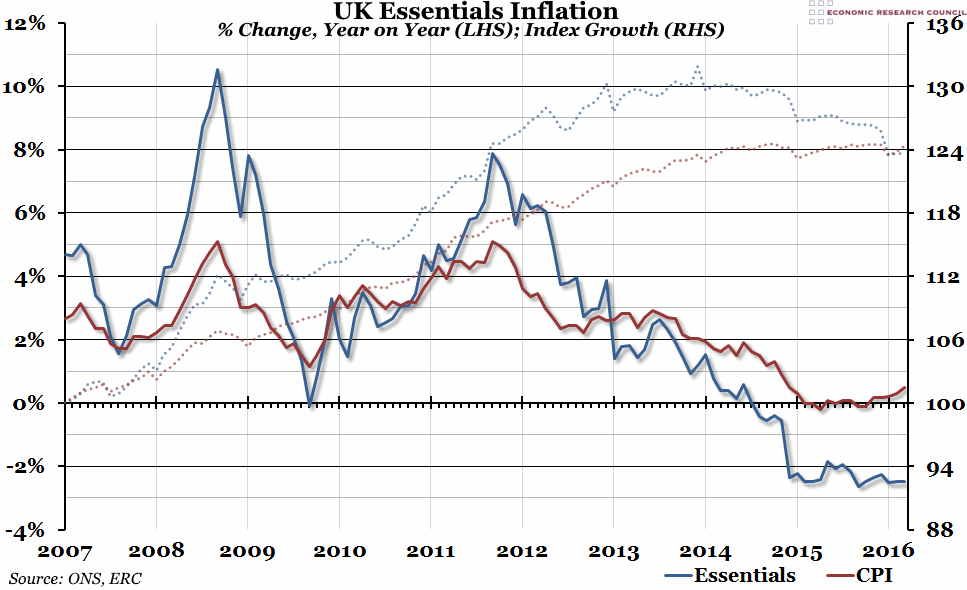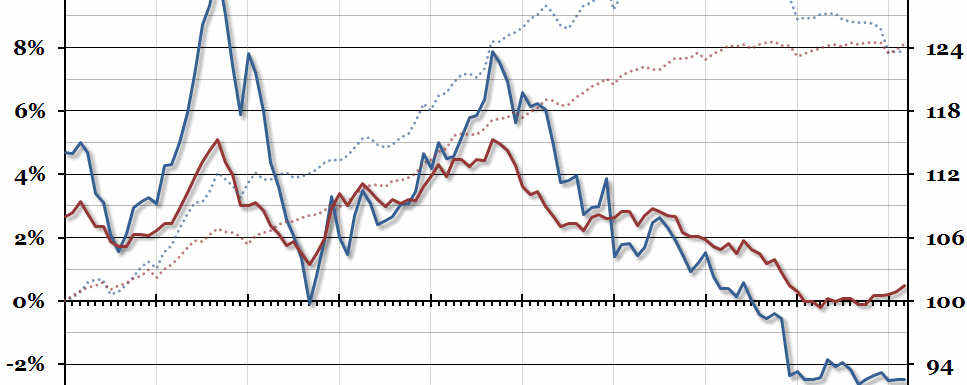
Summary
The official CPI measure of inflation picked up in March to +0.5% on the previous year. However, our “Essentials Index” remained at -2.5% for the third month in a row, and it has now been at around that level since December 2014. This has helped close the gap between the CPI and the Essentials Index.
What does the chart show?
The solid red line is the CPI measure of inflation, as a monthly percentage change compared to the same month in the previous year, measured against the left hand axis. The solid blue line is our own “essentials price index”, measured on the same basis as the CPI and using their weights, but including only the most basic cost of living (food, clothing, housing, utilities, and transportation costs). The dotted lines represent the overall index growth for each respective measure over the period, with January 2007 equal to 100, measured against the right hand axis.
Why is the chart interesting?
The official measure of inflation may have started to pick up at the start of this year after a flat 2015, but our “Essentials Index” remains in solidly deflationary territory at -2.5% (the difference between the two inflation rates is now the biggest it has been since Spring 2009).
Before the start of 2013, the cost of essentials either rose by about the same as the general price level, or by significantly more (reaching over 10% in 2008). More recently, we’ve seen food and commodity prices falling, and this has meant that for the past year, the cost of the basics has been falling by 2%-2.5% annually while the general price level has remained steady.
As you can see from the dotted lines on the graph, the faster price increases in essentials meant that by the end of 2012, the cost of the basics had gone up by a total of 30% since 2007, while the general price level had only increased by 20%. This hit poorer families disproportionately hard, as a larger share of their income is spent on the essentials. By March 2016, however, that gap had closed, and now our Essentials Index and the CPI are both at the same level: 24% higher than January 2007.

